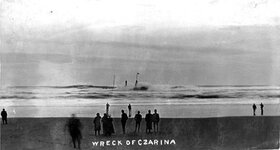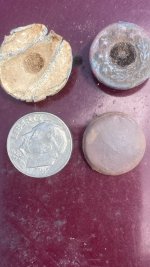Jeffro
Silver Member
I have a couple leads, but no names, registries, etc. to go with them. Gold coins have been found on the coast just North of Coos Bay, and supposedly 2 spanish ships sank just off the mouth. Thats about all I got.
Can anyone put some names to ships lost off this shore? Or share a story/ lead you got?
Thanks all- this is a great forum for info!
Can anyone put some names to ships lost off this shore? Or share a story/ lead you got?
Thanks all- this is a great forum for info!



 I knew you'd come up with something good... I have a hard time with internet searches about my own state for some reason, get overloaded with tons of trash. I'm headed down there next week and wanted to get some good spots for beachcombing. The storms we are getting here are making for some ripe pickings....
I knew you'd come up with something good... I have a hard time with internet searches about my own state for some reason, get overloaded with tons of trash. I'm headed down there next week and wanted to get some good spots for beachcombing. The storms we are getting here are making for some ripe pickings....


